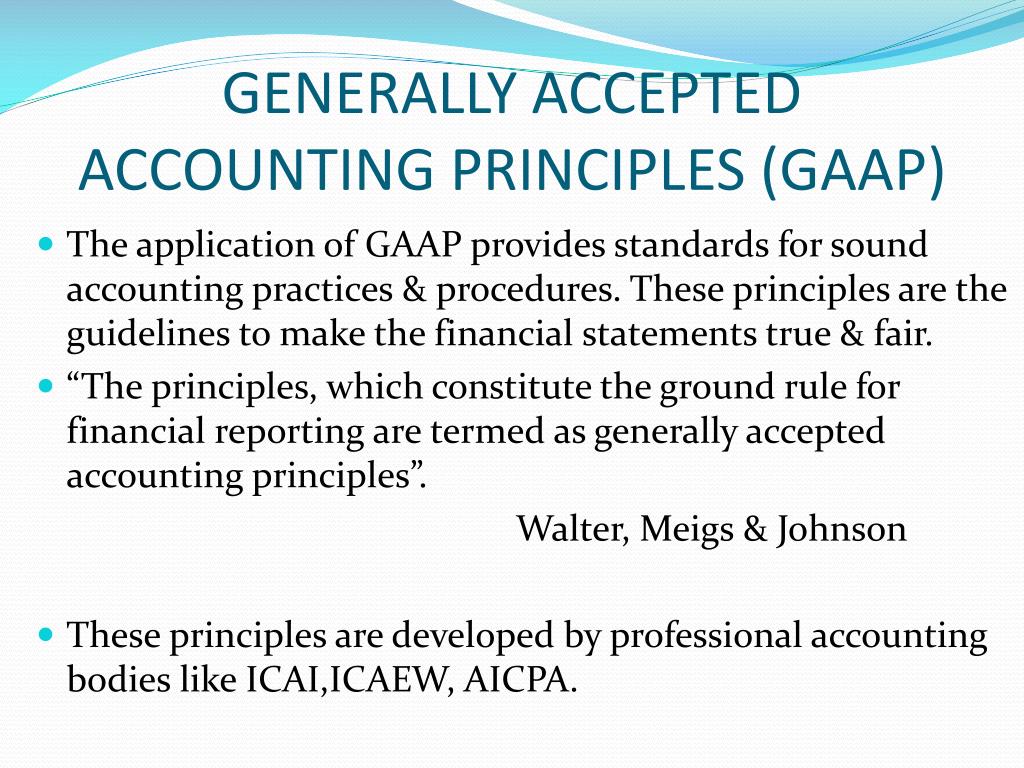
- #Generally accepted auditing standards are listed two ways code
- #Generally accepted auditing standards are listed two ways professional
14 The auditor should be aware of and consider interpretive publications applicable to his or her audit.

An interpretive publication is issued under the authority of the ASB after all ASB members haveīeen provided an opportunity to consider and comment on whether the proposed interpretive publication is On the application of the SASs in specific circumstances, including engagements for entities in specialized Interpretive publications are recommendations Position.6 Interpretive publications are not auditing standards. 13 Interpretive publications consist of auditing interpretations of the SASs, appendixes to the SASs,5Īuditing guidance included in AICPA Audit and Accounting Guides, and AICPA auditing Statements of Ment, the auditor must document in the working papers his or her justification for the departure and how theĪlternative procedures performed in the circumstances were sufficient to achieve the objectives of the When, in rare circumstances, the auditor departs from a presumptively mandatory require. Particularly those related to field work and reporting.4The auditor should be prepared to justify departuresįrom the SASs. Materiality and audit risk also underlie the application of the 10 standards and the SASs,
#Generally accepted auditing standards are listed two ways professional
12 The nature of the 10 standards and the SASs requires the auditor to exercise professional judgment inĪpplying them. The SASsĪre codified within the framework of the 10 standards. Standards in the form of Statements on Auditing Standards (SASs) through a due process that includesĭeliberation in meetings open to the public, public exposure of proposed SASs, and a formal vote.
#Generally accepted auditing standards are listed two ways code
202 par.01), of theĪICPA Code of Professional Conduct requires an AICPA member who performs an audit (the auditor) to 11 Rule 202, Compliance With Standards (AICPA, Professional Standards, vol. The character of the auditor’s work, if any, and the degree of responsibility the auditor is taking, in Where an auditor’s name is associated with financial statements, the auditor should clearly indicate When the auditor cannot expressĪn overall opinion, the auditor should state the reasons therefor in the auditor’s report. State that an opinion cannot be expressed, in the auditor’s report. The auditor must either express an opinion regarding the financial statements, taken as a whole, or When the auditor determines that informative disclosures are not reasonably adequate, the auditorĭ. Not been consistently observed in the current period in relation to the preceding period.Ĭ. The auditor must identify in the auditor’s report those circumstances in which such principles have The auditor must state in the auditor’s report whether the financial statements are presented inī. The auditor must obtain sufficient appropriate1 audit evidence by performing audit procedures toĪfford a reasonable basis for an opinion regarding the financial statements under audit.Ī. To error or fraud, and to design the nature, timing, and extent of further audit procedures.Ĭ. Internal control, to assess the risks of material misstatement of the financial statements whether due The auditor must obtain a sufficient understanding of the entity and its environment, including its The auditor must adequately plan the work and must properly supervise any assistants.ī. The auditor must exercise due professional care in the performance of the audit and the preparationĪ. The auditor must maintain independence in mental attitude in all matters relating to the audit. The auditor must have adequate technical training and proficiency to perform the audit. 10 The general, field work, and reporting standards (the 10 standards) are as follows: General StandardsĪ. 09 AU section 150, Generally Accepted Auditing Standards (AICPA, Professional Standards, vol. Auditing procedures are acts that the auditor performs during theĬourse of an audit to comply with auditing standards. Procedures differ from auditing standards.

08 An independent auditor plans, conducts, and reports the results of an audit in accordance with GAAS.Īuditing standards provide a measure of audit quality and the objectives to be achieved in an audit.


 0 kommentar(er)
0 kommentar(er)
